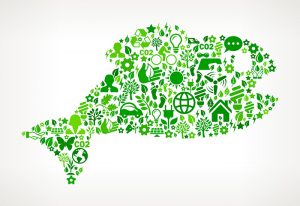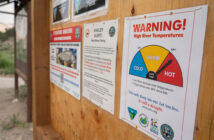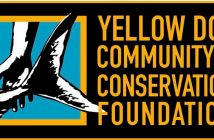 By Rick Crawford
By Rick Crawford
Emerger Strategies, [email protected]
The triple bottom line was coined in 1994 by John Elkington and basically says that businesses interested in becoming sustainable should not only look to have a healthy economic bottom line, but also healthy social and environmental bottom lines. The triple bottom line is also known as people, planet and profit and is an excellent framework to work towards becoming a sustainable business, or industry. For the most part, everyone understands profit, but how does one measure their social and environmental bottom lines?
Social bottom lines can be measured by the impact a company has on a community, such as the number of volunteer hours an organization donates, or the total financial contributions to non-profits a company and its employees contribute. A good example of social bottom line would be a company donating a percentage of sales, like 1% for the Planet, to a non-profit as this is specific and measurable. It’s like the old management saying goes…what gets measured, gets managed.
The Environmental bottom line is basically a company’s environmental footprint and typically is measured as the energy, waste and water usage of an organization. Additionally, environmental bottom line can be measured at the product level by performing a life cycle assessment (LCA), which measures the impact a product has on the environment. Due to the fact that burning fossil fuels contributes to climate change, calculating greenhouse gas (GHG) emissions, and using GHG emission as a key performance indicator is a way to report a company’s environmental bottom line.
The fishing industry in America is a multi-billion dollar industry accounting for roughly $115 billion in economic impact every year (Sportfishing in America, American Sportfishing Association, 2013) and numerous organizations generously donate to non-profits and conservation organizations meaning that many leading brands have a strong social bottom line. However, the fly fishing industry is lacking on its environmental bottom line, which is not only a missed opportunity, but worse. It’s not authentic. Nobody likes brands that are fake and consumers want to surround themselves with brands that align with their own values. But don’t take my word for it…according to a recent study (2012):
“A majority of consumers globally agree or strongly agree that they would
‘purchase more products that are environmentally and socially responsible’ if
they ‘performed as well as, or better than, products they usually buy’ (75%), ‘it
didn’t cost more’ (70%), and ‘companies’ health and environmental claims were
more believable’ (64%).”
-BBMG, GlobeScan, and SustainAbility
The companies that choose to marry philanthropy with environmental responsibility will attract top talent and have a more loyal customer base. A triple bottom line approach is a winning strategy for any business that wants to reduce risks associated with climate change, enhance their brand value and increase their profitability. Furthermore, it is in the best interest of the fly fishing industry to conserve resources for future generations so that it can sustain itself. As David Brower said: “There is no business to be made on a dead planet.”
Rick Crawford is a mediocre fly fisherman and the President of Emerger Strategies, a company providing fly fishing lifestyle brands, manufacturers and retailers with sustainability and marketing strategies that mitigate risks, enhance brand value and increase profitability. After graduating with an MBA in Sustainable Business from Marylhurst University, Crawford spent the last five years in the sustainability industry working with start-ups, small-to-medium enterprises and manufacturers in a variety of fields, including: solar, bio-diesel, green building and product transparency. Click here for more information.



